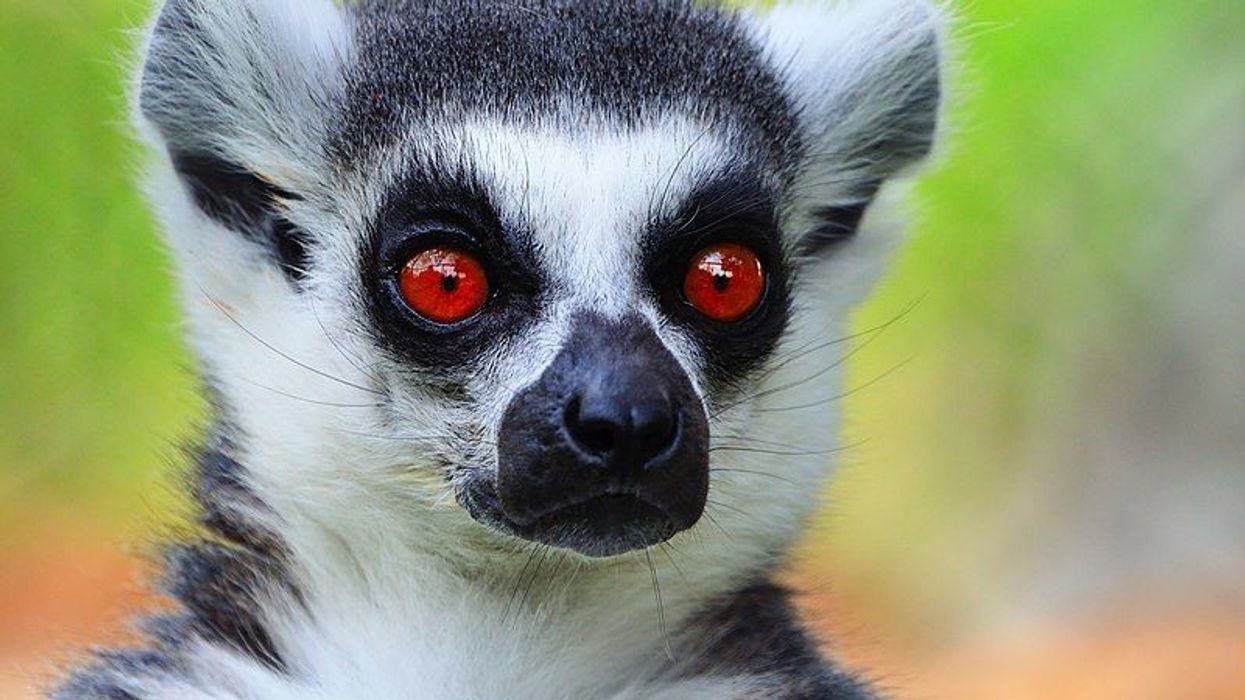The Mexican lemur or raccoon is a white-nosed coati that is commonly found in the South Western region of the United States, and parts of Mexico in Central America. However, these cute mammals can be seen throughout north and south America.
Also called coatis; besides their black and white cousins, lemurs have sturdy legs that they use to climb on trees to trees in search of food. The term coatimundi is assumed to arrive through the Tupian vernacular native to South America including north Argentina and Uruguay.
Unfortunately, these species are now endangered due to hunting and habitat loss. Read more about the Mexican lemurs in this article.
Mexican lemur Interesting Facts
What type of animal is a Mexican lemur?
Mexican lemurs are rattlesnake hunting coatis. Coatis are found in forest and wooded areas from the southwestern United States through South America.
What class of animal does a Mexican lemur belong to?
This animal is a mammal of prey and like all other members of this species, they have a strong sensing power that helps them forage and hunt their prey.
How many Mexican lemurs are there in the world?
There are merely around 2,000-2,400 ring-tailed lemurs left. This is a 95% reduction from the 2000 calculations. These are endemic creatures that extensively populate Madagascar, and are considered a primary species of the nation that must be safely evacuated into the wild.
Where does a Mexican lemur live?
The Mexican lemurs prefer to live in forests in a high elevated tree of bushy ground so that they can save themselves from predators by hiding behind the bushes. A Mexican lemur is more often seen sitting on a tree than on the ground.
They have also been noticed to inhabit southern Mexico because Mexico provides them with a suitable geographical location, which is an arid region, mountain, and jungle.
They are found in Central America, the eastern mountains of South America, and some parts of Mexico. Unfortunately, their population is constantly decreasing in these regions due to hunting and habitat loss.
What is a Mexican lemur's habitat?
They often nest in trees near jungle regions, but they frequently migrate with their young ones in search of food and a safe nest zone.
Who do Mexican lemurs live with?
The animals of this species can live in groups in a thick mountain region. Mostly they have been known to live with their family group. We bet that it will be a delight to see groups of coatimundis with their family in their natural habitat.
How long does a Mexican lemur live?
Hog-nosed lemurs enjoy a longer life span. They are known to live for about 16 years in the wild, but some have been recorded to live as long as 35 years in captivity.
How do they reproduce?
Interbreeding between ring-tailed lemurs is periodic. The females barely breed one to two times a year, commonly during April, and every upbringing female is in association within a few weeks of each other.
Then each of them gives birth at the identical moment, in August or September. Commonly, male and female lemurs can spawn when they become three to four years old. Still, in particularly nice years, when there are more reserves, they may breed earlier.
In disastrous periods, they may not breed until they are aged. In detention, where reserves are susceptible to arrival, they frequently breed at about one and a half years old.
However, females will barely give birth to one baby at a moment, though they do periodically give birth to twins. Their incubation time, the number of times they bring the tot before delivering is over five months. Normally, lemurs give delivery to one baby at a time, still, twins are a possibility if nutrition is available in sufficient quantities.
What is their conservation status?
The Mexican lemurs are recorded as Endangered on the Red List of IUCN (International Union for Conservation of Nature). These lemurs are found in the arid jungles, spiny copes, montane woodlands, mangroves, rocky outcrops, and rainforests in southern and southwestern Madagascar. They are on the verge of going extinct.
Mexican Lemur Fun Facts
What do Mexican lemurs look like?
Mexican lemurs are normally little, and their complexion relatively matches a dog's complexion in a tinier species or a fox's complexion in the bigger category.
Several lemur characteristics include a snout, and all possess a moist and hairless nose with a hollow nasal path, which is unusual between dog faces and creates an exceptional sniffer. Many lemurs of eastern Madagascar and the nearest Comoro Islands possess big eyes, fox-like complexions, monkey-like physiques, long snouts, and protracted back limbs.
A lemur can also bend its snout sideways to nearly right angles.
How cute are they?
Mexican lemurs are little animals that look like a mixture between a raccoon, monkey, and anteater. Coatis look extremely cute during their childhood period. These animals look like small kittens with cute elongated noses as they ride on their mother's back during their preadolescence period.
How do they communicate?
These animals communicate through vocalizations and by sniffing scents. Coatis are one of the greatest vocal mammals with at least 16 unique vocalizations incorporating one alarm for airborne buzzards and another for terrene buzzards.
There is an alarm to fetch squad partners concurrently and a reminder alarm uttered in the union by the entire crowd. Coatis hang their ringed tails in the air when they wander as optical communication to keep the groups together.
How big is a Mexican lemur?
Their body length is about 3.5 in (9 cm) and the fluffy tail of the coatis can be larger than their bodies.
They are 10 times bigger than a squirrel and smaller than a monkey by a few inches. It will be a delight to see the hog-nosed coatis in a group with their exotic tail that they hold up in the air in their natural habitat in places like central and South America.
The easter and western mountain species of lemurs are smaller in size, with defined masks and ringed tails being their notable features.
How fast can a Mexican lemur move?
These animals are known to move at a speed of about 12 mph (19.3 kph). It moves so quickly, for example, the few seconds we will need to turn up our heads will let them vanish. They just need a few seconds to move from one position to another.
How much does a Mexican lemur weigh?
An adult coatimundi weighs about 4.85 lb (2.2 kg). There is very little sexual dimorphism noticed among these animals. Males have been observed to be a little heavier than females. The young animal weighs around 0.19-0.25 lb (86.2-113.4 g).
What are the male and female names of the species?
A female lemur is known as a princess and a male lemur is known as a lemur catta also referred to as the ring-tailed coati. Lemurs are not just primates that love scenting food. Researchers reveal that the male animal impresses females by emitting a floral and fruity fragrance from their bodies.
What would you call a baby Mexican lemur?
A baby lemur is known as a pup, commonly attached to its mother's midsection for the first four to five weeks of its life, and then goes foraging on her hind till it is four to five months old.
What do they eat?
Some lemurs are herbivores and feed on fruit, blooms, tree crust, and fluids. Lemurs can be relatively fussy about what they eat, with the utmost of their diet coming from a rare plant species, as stated by the American Museum of Natural History (AMNH).
Most lemurs are omnivores.
Some lemurs can also hunt down tiny vertebrates, by forcing them to the ground and biting their prey on the head. Wild lemurs, for instance, will eat anything effortlessly attainable to them, and their sustenance can contain spiders, weathercock, and also small birds.
How active are they?
Coatis are considerably active during the day. Similar to their raccoon cousins, they are bizarre and intelligent fetishes and are generous climbers as they climb very fast. When grazing, they explore the ground as well as the trees for grains, eggs, fruits, and a broad mixture of tiny creatures from mice to small birds.
Would they make a good pet?
Mexican Lemurs are popular in central and South America. They are close to raccoons but they are much more convivial so they make good pets.
These animals are easy to feed and they are very sensible and cheerful. However, there are negative sides as well, as males become very arrogant and hasty. So it is better to be careful before considering them as a pet.
Did you know...
Sometimes, the ring-tailed coatis can become dangerous and vicious if they are not bottle-fed at a young stage of life. It is better to wear sturdy, protective hand gloves whenever dealing with a coati because it will preclude cuts from trembling and scampering coatis.
The coatis were detected at the National Palo Verde sanctuary in Guanacaste in 2010.
In Mexico, people call the coatis by a special term known as 'Tejon' as these animals are from the raccoon family.
Is a coati a lemur?
Coatis look like a crossbreed between a wild lemur and a dog. They are similar to raccoons because they have two extremely different features that are big silky tails that they keep at a high level in the air during the forage, and a flexible nose that they operate to detect food while foraging.
Is the Mexican lemur active at night?
The tiny rat or coatimundi is extremely active at night. They are the offspring of a considerably bigger species of exotic lemurs that are currently endangered.









